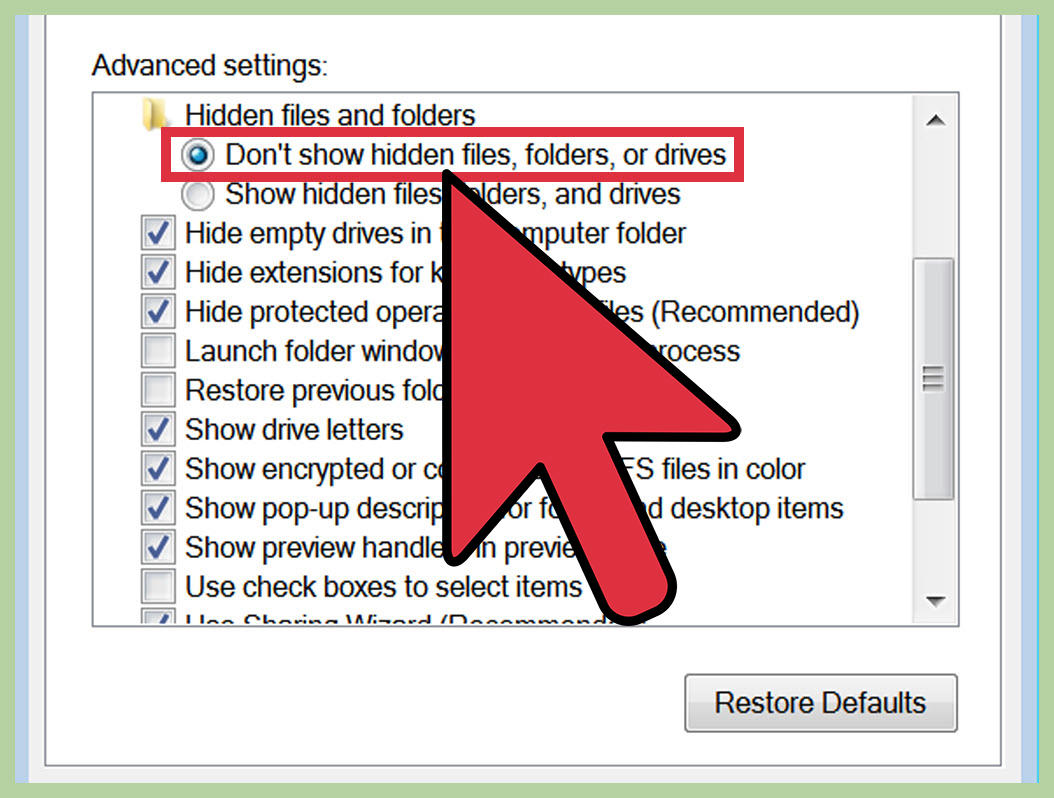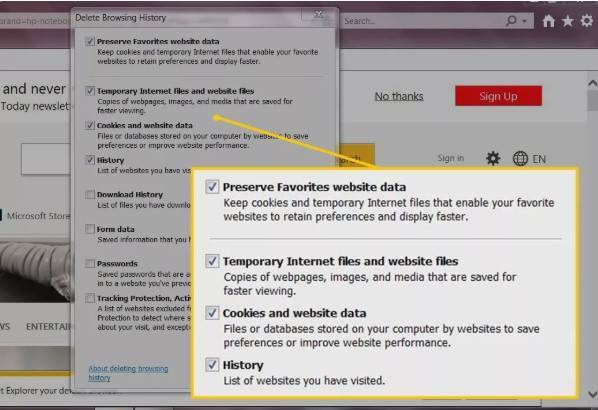What are the Temporary Internet Files?
In the 'Tools' menu, click on 'Internet Options'. In 'Internet Options', go to the 'General' Tab. There are two buttons located in the middle. One is 'Delete Files' and the other is 'Delete Cookies'. Also Firefox does not use the temporary internet files that IE uses but rather a Cache. You can type about:cache in Location (address) bar to view and see where it is located. You can type 'about:cache' in Location (address) bar to view and see where it is located.
Where is located the Temporary Internet Files folder?

How to delete Temporary Internet Files?
- Temporary Internet files show data in the folder according to disk cleanup, so far ran ccleaner, then ran diskcleanup again a week later, and seems like more data in that folder on my SSD, and i'm like what the heck, I cleared the temp folder manually, clear Appdata/local/temp on both Standard user and Admin account.
- The Temporary Internet Files (or cache) folder is used by Windows Internet Explorer and by MSN Explorer to store webpage content on the computer hard disk for quick viewing. This cache lets Internet Explorer or MSN Explorer download only the content that has changed since you last viewed a webpage, instead of downloading all the content every.
What are the Temporary Internet Files?
Temporary Internet Files is the name of a folder (directory) on your hard disk that is used byInternet Explorer to store Web pages, images, audio and video files, and other content from the Websites that you are visiting. This folder is also known as the cache of Internet Explorer.
The purpose of the Temporary Internet Files folder to speed up the loading of the Web pages. It works like this: every time when you visit a web page with Internet Explorer, the browser first checks to see if the web page and its pictures (and possibly other files) are already in the Temporary Internet Files cache. If they are (i.e. if you have visited the same page before), Internet Explorer uses your Internet connection only to check if the web page has changed since the last visit. In most cases it was not changed and the Internet Explorer loads the page from the Temporary Internet Files folder on your hard disk, which is many times faster than loading the page from the Internet. In addition to improving the speed of web browsing, the Temporary Internet Files folder also makes possible the so called offline browsing, which gives you the ability to open the web pages from the cache even when you are not connected to the Internet. Despite these positive things about Temporary Internet Files, there is one big drawback: they compromise your privacy. They are called temporary but they are never deleted unless the cache is full and the Temporary Internet Files can reach very large size on the modern computers. Everyone with access to your computer can look into your Temporary Internet Files folder (location of this folder is revealed in the chapter 'Where is located the Temporary Internet Files folder?') and see the sites that you have visited in the past. You can manually delete the contents of Temporary Internet Files folder (explained in the chapter 'How to delete Temporary Internet Files?') but this will not erase all traces of the pages because a special file called Index.dat is placed in this folder and it will still preserve the names and even the dates of your visits to a lot of web pages. You can read more about the index.dat files (yes, there are many of these) in the article Delete Index.dat files. | 1. When you visit a web page for the first time, your browser downloads from the Internet the whole content of the page. The internet connection is relatively slow and therefore there is some dalay. After the content is downloaded, Internet Explorer saves it in the Temporary Internet Files folder on your hard disk. 2. On your next visit, Internet Explorer first checks to see if the page is already in the Temporary Internet Files folder. If it is there, Internet Explorer retrieves it from your hard disk, which is much faster than downloading the page from the Internet. |
Can we delete all traces that reveal which pages were visited? And can we enjoy the benefits of Temporary Internet Files without fear that this will make our online habits highly exposed? Both questions have one answer: you can use Mil Shield to clean all traces. If you wish, you can select some sites that will be left in Temporary Internet Files folder.
|
Adchips usb devices driver. If you want to know more about Temporary Internet Files and want to locate them and delete them manually, then read the next chapters of this article.
Where is located the Temporary Internet Files folder?
The location of the Temporary Internet Files folder depends on the version of Windows and whether or not you areusing user profiles.
If you have Windows 7 or Windows Vista then Temporary Internet Files are in these locations (note that on your PC they can be on other drive instead of drive C):C:Users<username>AppDataLocalMicrosoftWindowsTemporary Internet FilesLow
|
Note that even with these settings, in Windows 7 most of the Temporary Internet Files are not visible in Windows Explorer. You will have to go to the folder Content.IE5, which is placed under the Temporary Internet Files main folder. You can do this by clicking into the address bar of Windows Explorer and appending the string Content.IE5 to the full location of the TIF folder as shown in the screenshot bellow.
If you have Windows XP or Windows 2000 then Temporary Internet Files are in this location (note that on your PC they can be on other drive instead of drive C):
 Administrator to get the path of the Temporary Internet Files folder. If you have Windows Me,
Administrator to get the path of the Temporary Internet Files folder. If you have Windows Me,  Windows 98, Windows NT or Windows 95 then index.dat files are in these locations:
Windows 98, Windows NT or Windows 95 then index.dat files are in these locations: C:WindowsProfiles<username>Temporary Internet Files
You can use Mil Shield toclean the content of Temporary Internet Files along with index.dat files, history, cookies, cache and many other tracks.
You can delete the Temporary Internet Files if you want to reclaim some disk space on your system disk (their size can reach several gigabytes).To delete Temporary Internet Files manually, do the following things:
- Start Internet Explorer and click the Safety button on the top right size of Internet Explorer window, then select Delete Browsing History.. from the drop-down menu. This will open the Delete Browsing History window.
- In the Delete Browsing History dialog box, click to select the Temporary Internet Files check box. Also make sure to deselect the other options if you want to clean only the Temporary Internet Files and leave the other history information intact.
- Click Delete button to delete the files. Note that if you are doing this for the first time, the deleting can take a large amount of time, so be patient.
- Start Internet Explorer and click the Tools button on the top right size of Internet Explorer window, then select Delete Browsing History.. from the drop-down menu. This will open the Delete Browsing History window.
- In the Delete Browsing History dialog box, click the button Delete Files.. to delete the files. Note that if you are doing this for the first time, the deleting can take a large amount of time, so be patient.
- Start Internet Explorer and click Tools menu, then select Internet Options.. from this menu. This will open the Internet Options window.
- Click General tab and then find in the section Temporary Internet Files the button Delete Files.. and click it. A new dialog box opens.
- In the Delete Files dialog box, click to select the Delete all offline content check box if you want to delete all Web page content that you have made available offline.
- Click OK to delete the files. Note that if you are doing this for the first time, the deleting can take a large amount of time, so be patient.
Windows Xp Manually Delete Temporary Internet Files
Continental resources driver download for windows 10. WARNING! This will most probably delete all visible items in theTemporary Internet Files folder (except cookies) but a number of invisible traces mayremain in the index.dat files. The only way to be sure that you are getting rid of alltraces for good is the usage of specialized privacy protection program likeMil Shield.
Can I Delete Temporary Internet Files
Mil Shield is a powerful privacy protection program that was designed specifically to cleanand shred the Temporary Internet Files. Additional benefit is the ability to preserve the tracks fromsome chosen by you sites (selective cleaning), which makes your browsing more comfortable and safe (it is rather suspicious to always have empty history, cookies and Temporary Internet Files - it is better to leave some tracks from 'innocent' sites). Mil Shield also cleans all other tracks as index.dat files, cookies, history, cache, AutoComplete records, UserData records, history of recently used folders and documents and many more.
